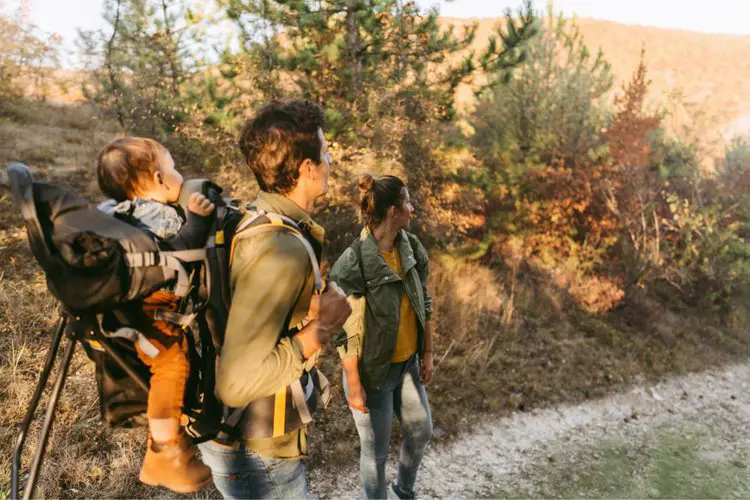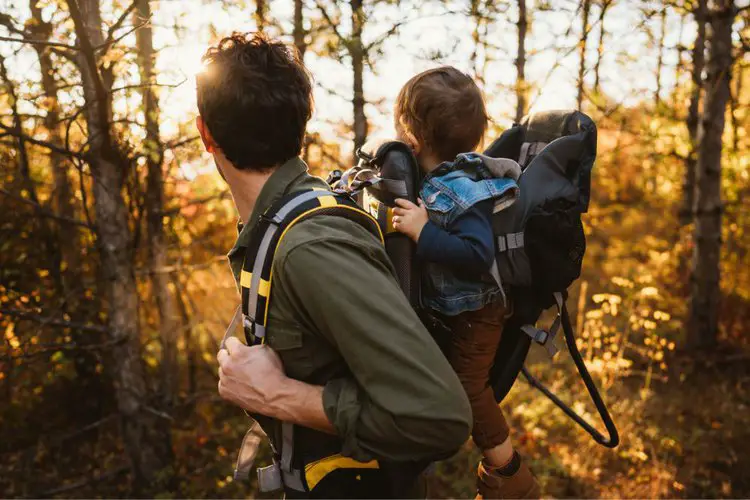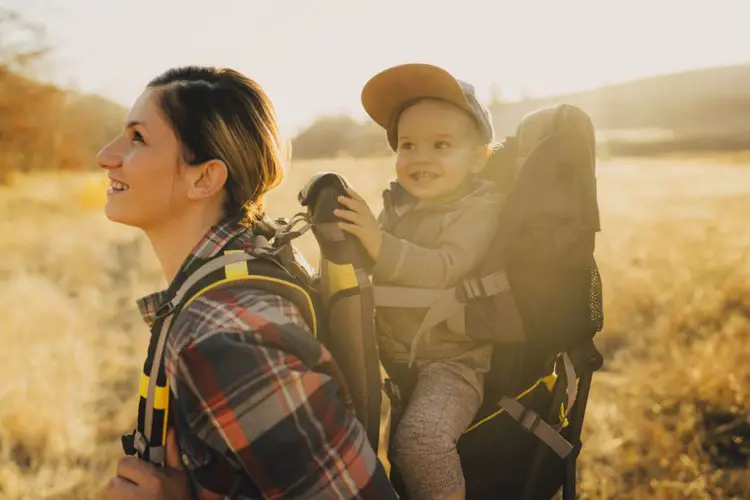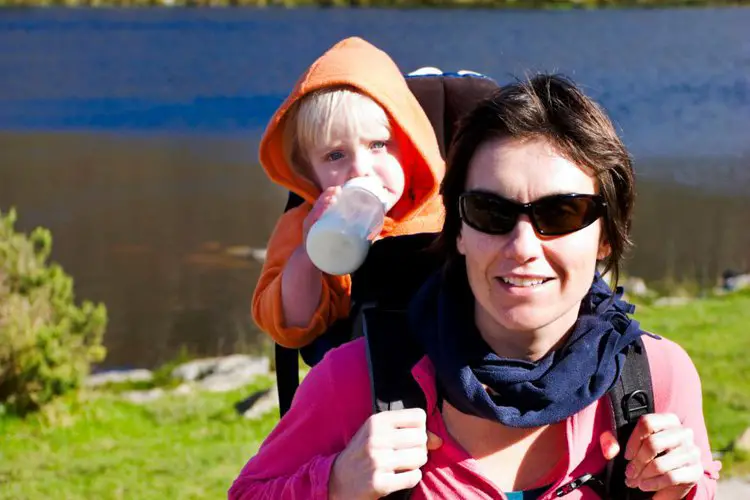If you’re an avid hiker and a new parent, you may be wondering when you can start taking your baby with you on your outdoor adventures.
While it’s important to expose your child to nature and the great outdoors, you also need to make sure that your little one is safe and comfortable during your hikes.
One of the most popular ways to bring your baby with you on a hike is to use a hiking backpack. But when can a baby sit in a hiking backpack?
In this article, we’ll discuss the best age for your baby to start using a hiking backpack, as well as some tips for safe and comfortable hiking with your little one.
Key Takeaways
- It is important to wait until a baby is at least 6 months old before carrying them in a hiking backpack.
- At 6 months, most babies are able to sit up on their own and have good head and neck control, which is necessary for safe and comfortable carrying.
- Choose a hiking backpack that is designed for infants and provides proper support for their developing bodies.
- Adjust the backpack properly to ensure good weight distribution and minimize the risk of strain or injury to the wearer.
- Be sure to bring along all the necessary supplies for your baby, including diapers, wipes, and extra clothing, and take frequent breaks to allow your baby to stretch and move around.
- Always prioritize your baby’s safety and comfort when using a hiking backpack and pay attention to any signs that your baby may be uncomfortable or in distress.
Contents
When Can a Baby Sit in a Hiking Backpack?
The short answer is that a baby can sit in a hiking backpack once they have developed enough neck and head control to hold their head up on their own.
This usually happens around 6 to 8 months of age, although every baby is different, and you should consult with your pediatrician to determine if your child is ready for a hiking backpack.

Before this age, your baby’s neck muscles are not strong enough to support their head, and their spine is not yet fully developed.
Putting your baby in a hiking backpack before they are ready can lead to serious injuries.
Once your baby is ready for a hiking backpack, you should look for a backpack that is specifically designed for infants and toddlers.
These backpacks usually have a high back and headrest to support your baby’s head and neck, as well as a padded seat and harness to keep them secure.
Look for a backpack with an adjustable harness that can grow with your baby, and make sure that the backpack fits your body properly to ensure the best balance and stability.
- CARRY YOUR KIDS SAFELY AND COMFORTABLY: Your child will be carried safely in his padded cocoon with...
- YOUR BACKPACK BABY CARRIER WILL PROTECT YOUR BACK AS YOU CARRY YOUR CHILD: You may be carrying your...
- MULTIPLE POCKETS + INSULATED POCKET FOR BOTTLE: We know how much gear goes with you and your baby...
Last update on 2023-11-11 / Affiliate links / Images from Amazon Product Advertising API
If you are doubt about checking baby hiking backpack at the airport, this article is for you: Can You Gate Check a Baby Hiking Backpack?
Tips for Safe and Comfortable Hiking with Your Little One
Carrying your baby in a hiking backpack can be a great way to enjoy the outdoors together, but there are some important things to keep in mind to ensure that your baby is safe and comfortable.
Here are some tips to help you get started:
Start with short hikes

When you’re first starting out with your baby in a hiking backpack, it’s important to start with short hikes to allow your baby to adjust to the new experience.
Start with a hike that’s no longer than an hour or two, and gradually increase the length and difficulty of your hikes as your baby becomes more comfortable.
Pack Lightly
It’s important not to pack too many supplies in the backpack, as this can make it heavier than necessary and affect your balance.
Pack only what’s necessary for the trip, such as diapers, wipes, and a change of clothes.
Last update on 2023-11-11 / Affiliate links / Images from Amazon Product Advertising API
Adjust the Backpack Properly

It’s important to adjust the backpack properly to ensure that it fits snugly on your back and that the weight is evenly distributed.
This will help you maintain your balance and prevent you from getting tired too quickly.
Check the weather and trail conditions
Make sure to check the weather and trail conditions before you head out, and be prepared for any changes in the weather.
Avoid hiking in extreme heat or cold, and be aware of any potential hazards on the trail, such as rocky terrain or steep drops.
Dress your baby appropriately

Dress your baby in layers and bring along a hat and sunscreen to protect them from the sun.
Make sure that your baby is warm enough, but not too hot, as overheating can be dangerous for infants.
Last update on 2023-11-11 / Affiliate links / Images from Amazon Product Advertising API
Pay attention to your baby’s cues

Your baby may not be able to tell you when they’re uncomfortable or tired, so it’s important to pay attention to their cues.
If your baby seems fussy or restless, it may be time to take a break or head back to the car.
Take Breaks
It’s important to take breaks when carrying a baby hiking backpack, as this will help you and your baby rest and recharge.
Take breaks every hour or so, and make sure to stretch your legs and back.
Conclusion
Hiking with a baby can be a fun and rewarding experience, but it’s important to take the time to properly prepare and ensure your little one’s safety and comfort.
Remember to consult with your pediatrician to determine if your child is ready for a hiking backpack, and always use a backpack that is specifically designed for infants and toddlers.
Start with short hikes and gradually increase the length and difficulty as your baby becomes more comfortable.
Pay attention to your baby’s cues and dress them appropriately for the weather.
Bring plenty of supplies and always check the trail conditions and weather before heading out. By taking these steps, you can enjoy the great outdoors with your little one and create lasting memories together.



